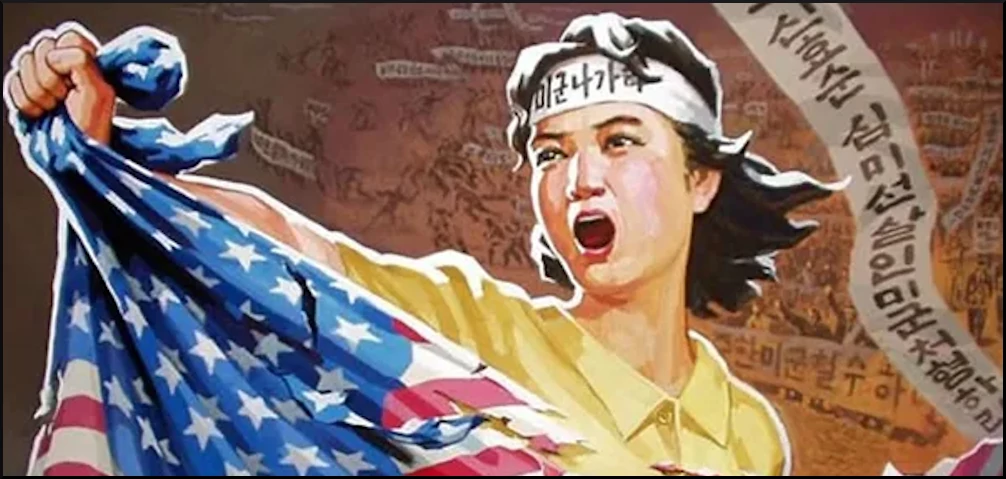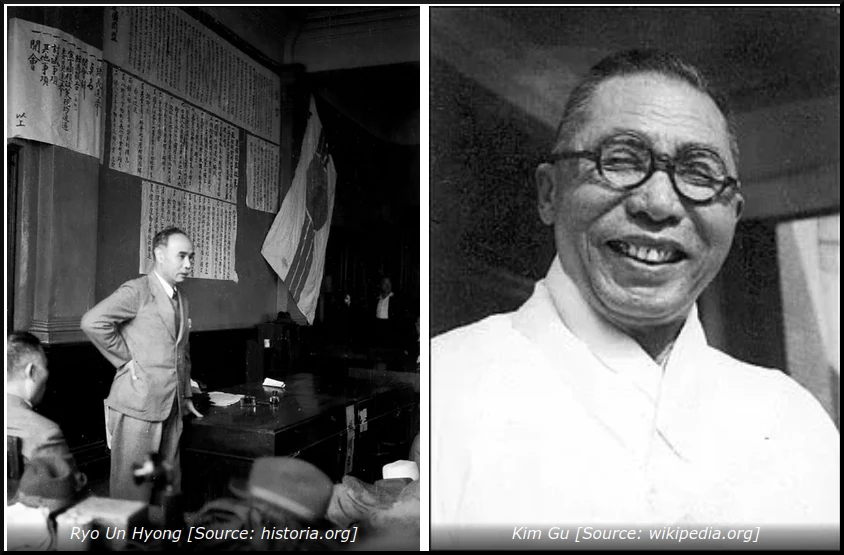by Dermot Hudson, published on Covert Action Magazine, January 15, 2024
The DPRK Has Thwarted U.S. Designs to Control the Korean Peninsula in a Major Historical Accomplishment.
Revisiting the lead up to the Korean war, a tale of atrocities, before, during and after… an important description of events prior to the Korean War. I had no idea so many of the events associated with the Korean War actually happened before the specified beginning of the war. [jb]
On August 15, 1945, Korea was liberated from Japanese imperialist colonial rule thanks to the arduous armed struggle waged by the anti-Japanese partisans led by the guerrilla leader Kim Il Sung.
Japanese imperialist rule, which had appeared so strong and permanent, crumbled virtually in an instant. Thirty-six years of oppressive rule by Japanese imperialism, which had been a close ally of Nazi Germany and fascist Italy, finally melted into history.
One misunderstanding that is frequently encountered, even among anti-imperialists and progressives, is that Korea was liberated from Japanese rule solely by the Soviet Union and that the Democratic People’s Republic of Korea (DPRK), the state that arose from the ruins of Japanese imperialism, was simply a creation of the Soviet Union.
In fact, the Soviet Union had concluded a neutrality pact with Japan and had only declared war on Japan on August 9, 1945, whereas the anti-Japanese guerrillas led by future President Kim Il Sung had begun fighting the Japanese in the 1930s.
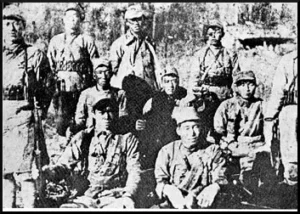
The entire Korean people elected Kim Il Sung as the Chairman of the PPCNK. Many vitally important democratic reforms were carried out soon after liberation, such as the historic agrarian reform that eliminated feudal exploitation.
Nationalization of basic industries was carried and progressive legislation on workers’ rights and sexual equality was enacted. The Labor Law enacted in 1946 even gave workers and office workers free medical treatment on an insurance basis, some two years before the National Health Service (NHS) was created in Britain.
In contrast to this progress in the northern half of Korea, reaction reigned in southern Korea. Tragically, Korea had been divided. A former U.S. Army colonel, Assistant Secretary of State for Far Eastern Affairs Dean Rusk, the future Secretary of State and key architect of the Vietnam War, had simply drawn a line with a ruler across a map of Korea at the 38th parallel.
Some 5,000 years of history as a unified nation were destroyed by the stroke of a pencil and the destiny of small nations trifled with by big powers.
The U.S. imperialists fixed the 38th parallel as the demarcation line and occupied southern Korea on the pretext of “disarming the Japanese troops in the south of the 38 degrees north latitude.” They reigned over it as colonial rulers, throwing a grave obstacle in the path of building a new society by the south Korean people.
It needs to be clear that the U.S. played no part whatsoever in the liberation of Korea, their troops did not arrive in Korea until three weeks after liberation, indeed they were in no position to advance to Korea. There was also no need for them to go into south Korea as Korea had already been liberated on August 15.
When I first visited the DPRK in May 1992, I went to the Korean Revolution Museum. There I saw a map of the anti-Japanese revolutionary armed struggle led by President Kim Il Sung. Some were surprised to see that this struggle had been waged not only in north Korea but in the south as well. Someone asked why a unified Korean government was not set up as there were progressive and revolutionary forces in the south as well. The guide replied “the U.S. imperialists did terrible things, they divided Korea.”
As President Kim Il Sung remarked:
“The U.S. imperialists occupied south Korea, reactionaries from home and abroad, and the former stooges of Japanese imperialism became lackeys of U.S. imperialism and opposed the Korean people. We were confronted with the aggressive policy of the U.S. imperialists who were not only opposed to the Korean revolution and the building of an independent unified state by the Korean people but were also seeking to extend their influence to north Korea.”
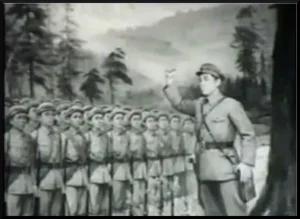
Significantly, the U.S. actually aided and abetted the Japanese takeover of Korea in the early 20th century in the form of the “Taft-Katsura” agreement of 1905. The U.S. agreed with the Japanese to allow them to occupy Korea in return for a free hand in the Philippines.
During the period of Japanese colonial rule, although Japan was the main colonial occupier, the U.S. owned the gold mines at Unsan, Taeyudong and Suan and carted away tons of gold. Now in 1945 they seized one half of Korea.
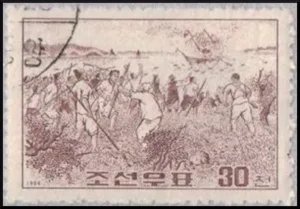
The U.S. imperialists, therefore, denied the liberated south Korean people freedom of all political activities for building an independent and sovereign country and issued one “proclamation” after another, forcing them to “submit” to the colonial rule by the governor-general of Korea.
On September 2, 1945, in his “proclamation” entitled “To All People in South Korea,” John Reed Hodge, former commander of the U.S. 24th Army Corps, announced that “proclamations and orders issued to the people shall be made public through the existing government offices” (meaning organs of Japanese rule and that “orders” from the Supreme Commander for the Allied Powers “shall be strictly followed and executed, and any person who unfortunately disobeys them shall suffer punishment.”
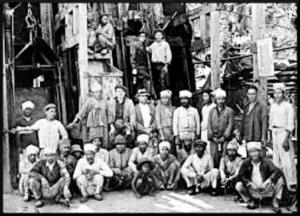
Having completed the preparations for the occupation of South Korea, the U.S. imperialists landed the “advance contingent” of the 24th Army Corps in Inchon on September 7, 1945. The following day, on September 8, two division forces of the 24th Army Corps (45,000-strong) started occupation of south Korea under the direct command of Hodge.
The U.S. troops swarmed into South Korea. From the start, they committed atrocities and barbarities against the Korean people.
Simultaneously, MacArthur successively made public his proclamations Nos. 1, 2 and 3, all dated September 7, which were dropped from planes all over south Korea.
In “Proclamation” No. 1 MacArthur announced the institution of a military occupation system in south Korea, preservation of the property of landlords and capitalists and prohibition of free political activities. Moreover, he declared that inhabitants in south Korea were duty-bound to unconditionally obey his orders and that “acts of resistance to the occupying forces or any acts which may disturb public peace and safety will be punished severely,” and forced the use of English as the official language for all purposes.
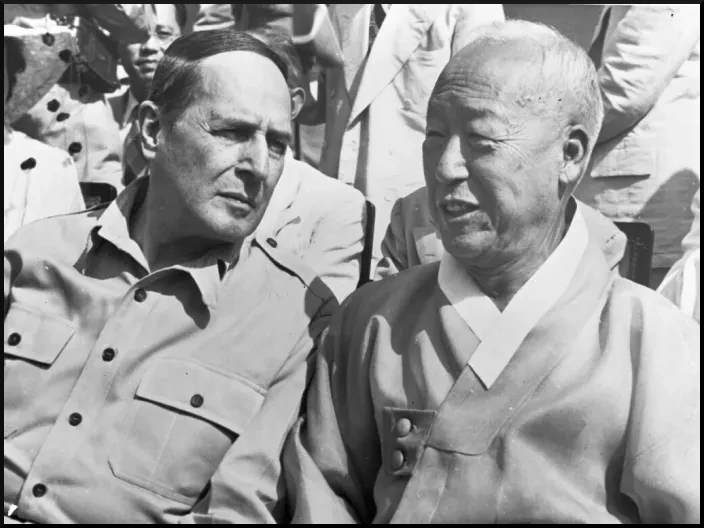
A governor-general ruling system, in essence, was established using the pretext of direct military administration. Along with the establishment of the “Military Government Office,” the so-called “court-martials” were set up in Seoul and all provinces and a “military court” in each county to restrict and suppress the free activities of the Korean people.
As a result, a signboard of the “U.S. Military Government Office “ was hung out on the former building of the Japanese “Government-General Office,” the old fascist machines and ruling methods were retained and inherited and colonial sovereign power was transferred to the U.S. imperialists.
It is relevant to point out that the U.S. imperialists became the colonial exploiter in South Korea as it seized Japanese property, which accounted for about 80 per cent of property in south Korea.
The U.S. imperialists renamed in February 1946 the “Oriental Development Company,” the former Japanese agency for plundering land and grain, as the “New Korea Company”’ and expropriated the total arable land of South Korea.
At that time, the total property held by the “New Korea Company’” reached the sum of $1.25 billion; it owned roughly 286,000 hectares of cultivated land to which more than 554,000 farm households, or 27% of the total farm households of south Korea, owed their existence.

In this way, the history of colonial rule by U.S. imperialism started in South Korea, replacing that of Japanese imperialism. From that time, South Korea began to be reduced to a U.S. imperialist military base for a new war. The U.S. was the new master in south Korea.
In its policy of political enslavement aimed at turning south Korea into U.S. colony, the “U.S. Military Government” put the main stress on the suppression and liquidation of the democratic and patriotic forces of the Korean people by arms and the rallying and fostering of the reactionary forces, so that it might consolidate its political foothold for the establishment of colonial rule in south Korea and the domination of all Korea.
The “National Security Law” enacted on December 1, 1948, which forbids organized support for the DPRK and the promotion of communist ideas, is a prime example of this.
In fact, all the policies adopted by U.S. imperialism toward south Korea, including that of establishment of the “U.S. Military Government,” were, without exception, related to its aggressive design to convert South Korea into a colonial military base and use it as a stepping-stone for the conquest of the whole of Korea.
In carrying out its plan of aggression on Korea, U.S. imperialism considered it most important to stamp out the sovereignty of the Korean people and place them under its domination. As an initial step toward this, it had to suppress and dissolve through the “Military Government” the People’s Committees at the point of the bayonet and prohibit the political activities of patriotic democratic forces in all walks of life.
In October 1945, Hodge announced: “The Military Government is the sole government of Korea.” The Communist Party and other progressive forces were suppressed. As U.S. writer and journalist Edgar Snow remarked, “When everything has been said about our occupation of Korea, probably the most significant thing is that we stopped a revolution here.”
The U.S. imperialists and their puppets in south Korea carried out fascist terrorism not only against workers and peasants but against political figures.
Ryo Un Hyong, leader of the south Korean People’s Party and a respected nationalist, was assassinated on July 19, 1947. So was Kim Gu, a rightwing figure who had come out against the U.S. occupation of south Korea and significantly had attended a north-south joint political conference held in north Korea in April 1948.
Direct U.S. military rule in south Korea was basically colonialism and was opposed by the South Korean people.
In September 1946 there was a general strike of south Korean workers. The U.S. imperialists felt the need to create a puppet regime to camouflage their rule in south Korea. They put in power the elderly Syngman Rhee, a Korean who had lived in the U.S. and was trained by the U.S. over many years.
Syngman Rhee had also embezzled funds of the nationalist movement. The Syngman Rhee puppet regime was characterized by one famous U.S. Asia expert, Professor Owen Lattimore, as follows: “America, which has in China complained of the bad luck of having inherited the Kuomintang through no fault of its own, has in Korea manufactured its own Kuomintang. To support our proclaimed policy of world-wide opposition to police states, we have in South Korea created a weak and unreliable police state of our own.”
The south Korean people fought against the Syngman Rhee puppet regime and the U.S. imperialists. In April 1948 the people of Jeju island rose up against separate elections but this was put down by the U.S. imperialists and Syngman Rhee puppets, who killed between 33,000 and 70,000 people (33,000 being an official estimate which was very conservative).
Numerous shackling and aggressive agreements, pacts and treaties such as the ROK-U.S. Mutual Defense Treaty of January 1950, were concluded. South Korea became a forward advance military base of the U.S. and a bullet shield.
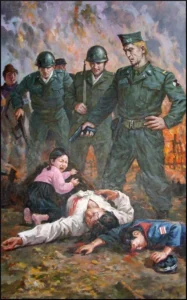
Even supposedly liberal and “progressive” rulers in South Korea—such as Kim Dae-jung, Roh Moo-hyun and Moon Jae-in were beholden to the U.S. and never mounted any substantial challenge to U.S. domination and control over South Korea.
Although there have been many changes in the world and on the Korean peninsula since 1945, the U.S. domination over South Korea remains unchanged. In fact, in some ways it has been tightened, as South Korea is now paying more than $1 billion annually for the “upkeep” of U.S. troops in South Korea so it is basically paying for the privilege of U.S. occupation.
The far right regime of Yoon Suk Yeol is committed to deepening dependency on the U.S. and allowing the U.S. to use South Korea in a war against the DPRK. On April 26, 2023, Yoon met U.S. President Biden and signed a declaration to create a so-called “Nuclear Consultative Group” which would “strengthen extended deterrence, discuss nuclear and strategic planning” or, in other words, target the DPRK.
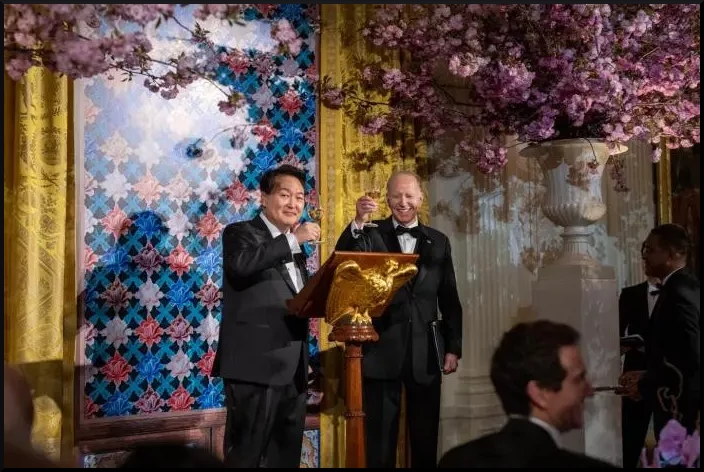
Dermot Hudson was born in London, UK and studied History at the University of Winchester and also did some postgraduate study at the University of Greenwich. He has visited the Democratic People’s Republic of Korea 18 times and is the Chairman of the Korean Friendship Association of the UK as well the founder of the British Group for the Study of the Juche Idea. In 2016 Dermot Hudson was awarded the Doctorate of Socio-politics by the Korean Association of Social Scientists. He can be reached at juche007@yahoo.co.uk.
